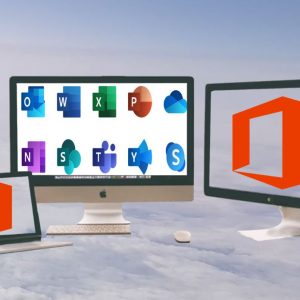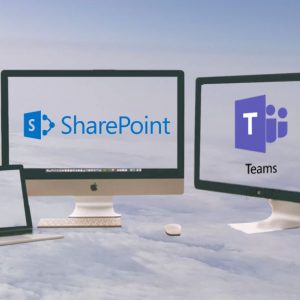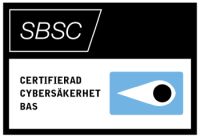Beskrivning
This five-day course provides a comprehensive focus on Juniper Networks data center switching technologies.
The first two days are designed to introduce the data center features including zero touch provisioning (ZTP), unified in-service software upgrade (ISSU), multichassis link aggregation (MC-LAG), Mixed Virtual Fabric, and Virtual Chassis Fabric (VCF).
The third day of the course is designed to provide students with advanced knowledge of troubleshooting key data center features including MC-LAG, Virtual Chassis, and VCF deployments.
The last two days of the course are designed to introduce data center features that are more advanced including IP Fabric, Virtual eXtensible Local Area Network (VXLAN) Layer 2 and Layer 3 Gateways, VXLAN with Ethernet VPN (EVPN) signaling, and Data Center Interconnect (DCI) for a VXLAN overlay. Students will learn to configure and monitor these features on the Junos operating system running on the QFX5100, EX4300, and vMX Series platforms.
Through demonstrations and hands-on labs, students will gain experience configuring, monitoring, troubleshooting, and analyzing the mentioned features of the Junos OS. This content is based on Junos OS Release 13.2X51-D21.1 and 14.1X53.
Advanced Data Center Switching (ADCX) begins at an intermediate-level course, and finishes at an advanced level.
Objectives
After successfully completing this course, you should be able to:
• Identify current challenges in today’s data center environments and explain how the QFX5100 system solves some of those challenges.
• List the various models of QFX5100 Series switches.
• List some data center architecture options.
• Explain the purpose and value of ZTP.
• Describe the components and operations of ZTP.
• Deploy a QFX5100 Series switch using ZTP.
• Explain the purpose and value of ISSU.
• Describe the components and operations of ISSU.
• Upgrade a QFX5100 Series switch using ISSU.
• Explain the purpose and value of MC-LAG.
• Describe the components and operations of MC-LAG.
• Implement an MC-LAG on QFX5100 Series switches.
• Describe key concepts and components of a mixed Virtual Chassis.
• Explain the operational details of a mixed Virtual Chassis.
• Implement a mixed Virtual Chassis and verify its operations.
• Describe key concepts and components of a Virtual Chassis Fabric.
• Describe the control and forwarding plane of a Virtual Chassis Fabric.
• Describe how to use the CLI to configure and monitor a Virtual Chassis Fabric.
• Describe how to provision a Virtual Chassis Fabric using nonprovisioning, preprovisioning, and autoprovisioning.
• Describe the software requirements and upgrade procedure of Virtual Chassis Fabric.
• Describe how to manage a Virtual Chassis Fabric with Junos Space.
• Explain a basic troubleshooting approach.
• List and use available troubleshooting tools.
• Describe the expected state and operation.
• Describe key processes and components.
• Identify potential issues with MC LAG.
• Resolve basic issues with MC LAG.
• Describe the expected state and operation.
• Describe key processes and components.
• Identify potential issues with Virtual Chassis.
• Resolve basic issues with Virtual Chassis.
• Explain the expected state and operation.
• Describe key processes and components.
• Identify potential issues with VCF.
• Resolve basic issues with VCF.
• Describe the benefits and challenges of the traditional multitier architecture.
• Describe the new networking requirements in a data center.
• Describe the various data center fabric architectures.
• Explain routing in an IP Fabric.
• Describe how to scale an IP Fabric.
• Configure an EBGP-based IP Fabric.
• Explain why you would use VXLAN in your data center.
• Describe the control and data plane of VXLAN in a controller-less overlay.
• Describe how to configure and monitor VXLAN when using multicast signaling.
• Describe the benefits of using EVPN signaling for VXLAN.
• Describe the operation of the EVPN protocol.
• Configure and monitor EVPN signaling for VXLAN.
• Define the term Data Center Interconnect.
• Describe the control and data plane of an MPLS VPN.
• Describe the DCI options when using a VXLAN overlay with EVPN signaling.
Audience
This course benefits individuals responsible for configuring, monitoring, and troubleshooting data center features that exist on the Junos OS running on data center-oriented platforms such as EX Series, QFX Series, MX Series, and vMX Series devices. This includes individuals in professional services, sales and support organizations, and the end users.
Prerequisites
The following are the prerequisites for this course:
• Understanding of the OSI model;
• Advanced routing knowledge—the Advanced Junos Enterprise Routing (AJER) course or equivalent knowledge; and
• Intermediate switching knowledge—the Junos Enterprise Switching Using Enhanced Layer 2 Software (JEX-ELS) or equivalent.
Programme
Day 1
Chapter 1: Course Introduction
Chapter 2: System Overview
• Data Center Challenges
• Addressing the Challenges with QFX5100 Series Switches
• Architectures and Features
Chapter 3: Zero Touch Provisioning
• Understanding Zero Touch Provisioning
• ZTP in Action: A Working Example
• Lab 1: Zero Touch Provisioning
Chapter 4: In-Service Software Upgrade
• Understanding ISSU on QFX5100 Series Switches
• ISSU in Action: A Working Example
• Lab 2: In-Service Software Upgrade
Day 2
Chapter 5: MC-LAG
• MC-LAG Overview
• MC-LAG Operations
• Deploying MC-LAGs
• Lab 3: MC-LAG
Chapter 6: Mixed Virtual Chassis
• Overview of Mixed Virtual Chassis
• Provisioning a Mixed Virtual Chassis
• Software Requirements and Upgrades
• Configuring and Monitoring a mixed Virtual Chassis
• Lab 4: Mixed Virtual Chassis
Chapter 7: Virtual Chassis Fabric
• Overview of Virtual Chassis Fabric
• Control and Forwarding Plane
Chapter 8: Virtual Chassis Fabric Management
• Managing a Virtual Chassis Fabric using the CLI
• Dynamically Provisioning a Virtual Chassis Fabric
• Preprovisioning and Autoprovisioning a Virtual Chassis Fabric
• Software Requirements and Upgrades
• Managing a Virtual Chassis Fabric with Space
• Lab 5: Virtual Chassis Fabric
Day 3
Chapter 9: Troubleshooting Basics
• Troubleshooting Overview
• A Troubleshooting Approach
• Troubleshooting Tools
Chapter 10: Troubleshooting Multichassis LAG
• Multichassis LAG Review
• Processes and Components
• Troubleshooting Case Study
• Lab: Troubleshooting Multichassis LAG
Chapter 11: Troubleshooting Virtual Chassis Technologies
• Virtual Chassis Technology Review
• Processes and Components
• Troubleshooting Case Study
• Lab: Troubleshooting Virtual Chassis Technologies
Day 4
Chapter 12: Next Generation Data Centers
• Traditional Multitier Architecture
• Data Center Fabric Architectures
Chapter 13: IP Fabric
• IP Fabric Overview
• IP Fabric Routing
• IP Fabric Scaling
• Configure an IP Fabric
• Lab: IP Fabric
Chapter 14: VXLAN
• Layer 2 Connectivity over a Layer 3 Network
• VXLAN using Multicast Control Plane
• VXLAN Configuration
• Lab: VXLAN
Day 5
Chapter 15: EVPN
• The Benefits of EVPN
• VXLAN using EVPN Control Plane
• EVPN/VXLAN Configuration
• Lab: VXLAN and EVPN Signaling
Chapter 16: Data Center Interconnect
• DCI Overview
• MPLS VPN Review
• DCI Options for a VXLAN Overlay
• Lab: DCI
Kursen levereras i samarbete med








Recensioner
Det finns inga recensioner än.